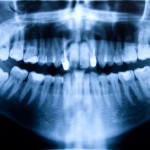
Third molar surgery for impacted mandibular third molars is a very common procedure. This is typically undertaken using a buccal-based flap (envelope or triangular) a variable amount of bone removal. Post-operative complications include pain, swelling, infection, trismus and wound dehiscence. In recent decades a lingual-based flap design has been used which arguably reduces wound dehiscence.
The aim of this review was to compare the postoperative discomfort, operative time, and wound healing in the short-term follow-up following surgical extraction of lower third molars with lingual- or buccal-based flaps.
Methods
Searches were conducted in the Cochrane Library, Embase, Medline/PubMed, Web of Science and Google Scholar databases. Randomised controlled trials (RCTs) published in English comparing the use of lingual- or buccal-based flaps for removal of impacted mandibular third molars published during or after 2000 were considered. Two reviewers independently screened and selected studies., extracted data and assessed risk of bias using the Cochrane domain-based tool. The primary outcomes were pain severity, swelling and trismus at 1, 3 and 7 days after surgery. Mean differences (MD) or standardized mean differences (SMD) odds ratios (OR) or risk ratios (RR) and 95%confidence intervals (CIs) were computed to assess associations between the variables.
Results
- 7 RCTs (3 parallel, 4 split-mouth) involving 714 patients were included.
- Mean age of patients was 22.2.
- 90% of the third molars were class II according to the Pell-Gregory classification.
- Lingual-based flap surgery lasted longer than buccal based flap surgery MD = 2.66 (95%CI; 0.22 to 5.10) [ 4 studies].
- For pain the pooled data showed no significant changes between the lingual-based flap and normal flap group in the first week after the surgery [ 6 studies].
- There was no significant difference in swelling between the buccal- and lingual-based flaps both in the early and late period of the first week [6 studies].
- No significant difference was observed for trismus between the lingual- and buccal-based flap on days 1 and 7. However, the results for day 3 showed that lingual- based flaps (all comma flaps) were associated with a significantly lower level of trismus SMD = 0.75, (95%CI; 1.24 to 0.26) [3 studies].
- Lingual-based flaps showed a significant decrease in the incidence of wound dehiscence compared with that in the control group RR = 0.44 (95%CI; 0.30 to 0.69) [ 4 studies].
Conclusions
The authors concluded: –
The lingual-based flap was associated with better primary wound closure in third molar removal. The comma flap, as a subtype, was preferable for relieving postoperative pain, swelling, and trismus over the buccal-based flap.
Comments
A recently published Cochrane review by Bailey et al (Dental Elf – 5th Aug 2020) looked at the relative risks and benefits of different techniques for surgical removal of mandibular wisdom teeth. The review included an examination of flap designs summarising their findings as,
There is insufficient evidence to determine whether envelope or triangular flap designs lead to more alveolar osteitis, wound infection, or permanent altered tongue, chin, or lip sensation. None of the studies in this comparison reported adverse effects.
The present review compares lingual- and buccal-based flaps included 7 studies none of which appear in the Cochrane review. None of the included studies was at low risk of bias and overall, there was little difference between the two main types of flap design. Improving the quality of reporting RCTs with more consistent use of the CONSORT statement would be beneficial. A majority of the studies included in this review were of a split-mouth design. The Cochrane reviewers suggested that while the spilt-mouth design may be appropriate for comparing surgical techniques of third molar removal consideration need to be given to which outcomes can most accurately be measured. They also called for consensus on the measurement of facial swelling.
Links
Primary Paper
Yuan L, Gao J, Liu S, Zhao H. Does the Lingual-Based Mucoperiosteal Flap Reduce Postoperative Morbidity Compared with the Buccal-Based Mucoperiosteal Flap After the Surgical Removal of Impacted Third Molars? A Meta-analysis Review. J Oral Maxillofac Surg. 2021 Feb 24: S0278-2391(21)00199-3. doi: 10.1016/j.joms.2021.02.023. Epub ahead of print. PMID: 33766455.
Other references
Dental Elf – 5th Aug 2020
